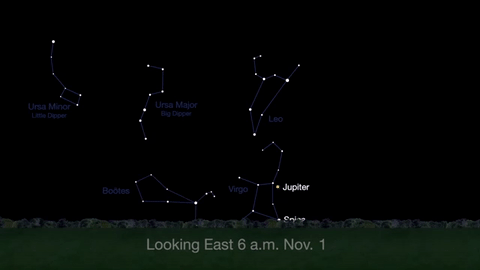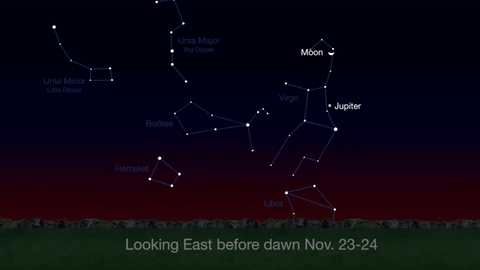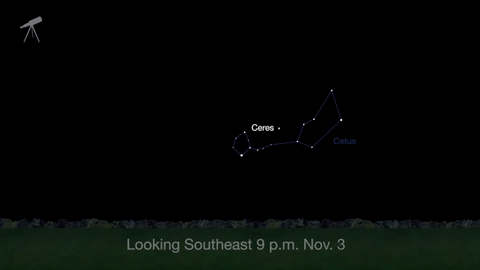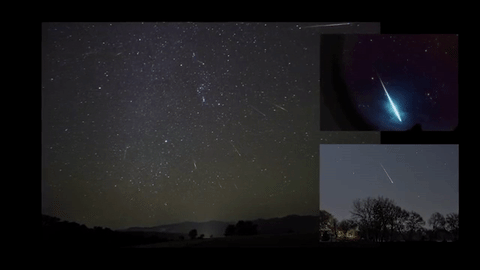Home Is Where The Astronaut Is…

Home is Where the Astronaut Is…
The International Space Station serves as a home, office and recreation room for astronauts. They share this confined space far above the Earth with crew members from different countries and cultures for as long as six months or more. At the same time, maintaining individual well-being and crew harmony is important for the crew and mission success.
The Culture, Values and Environmental Adaptation in Space (At Home in Space) Investigation, looks at changes in perceptions about home in space and the ways a unique culture may develop aboard the station during a mission. Discover more about this study HERE.
Make sure to follow us on Tumblr for your regular dose of space: http://nasa.tumblr.com
More Posts from Nasa and Others
out of all the roles you've had in the past, which one do you feel has best prepared you to be a flight director?
We See Seashores Shifting with Satellites
If you’re like us, as soon as the summer Sun is out, you start feeling – well, just beachy, sand you very much.
Lots of our favorite beaches are inside protected marine areas, which are regulated by governments to keep their ecosystems or cultural heritage intact. If you beachcomb at Cape Cod, swim in the Florida Keys or learn about Hawaiian culture at Papahānaumokuākea Marine National Monument, congrats! You’ve visited a protected marine area.

But time and tide haven’t been kind to some protected beaches.
Beaches are constantly changing, and science teams are using our 30-year record of Earth images from the NASA/USGS Landsat program to study what’s happening.
Overall, the sum total of sandy beaches has increased a bit over the last 30 years. But time and tide haven’t been as kind to our protected beaches – the team found that more than 1/3 of sandy beaches in protected marine areas have been eroding away.

Some of these areas were designated to protect vulnerable plant and animal species or connect delicate ecosystems. They are home to humpback whales and sea turtles, reefs and mangroves that protect the land from erosion and natural disasters, and species which are found in only one habitat in the world. Losing land area could upset the balance of these areas and endanger their future.

Next step: Looking for pearls of wisdom to save the beaches!
Right now, we aren’t sure which beaches are eroding due to natural processes, and which are due to humans – that’s the next step for science teams to investigate. Once we know the causes, we can start working on solutions to save the beaches.
Those 30 years of Landsat data will help scientists find answers to these questions much faster – instead of using airplanes or measuring the beaches by hand, they can use computer programs to rapidly investigate millions of satellite photos spanning many years of change.

By tracking beaches from space, scientists can help keep our summers sandy for years to come.
And that makes us as happy as clams.
Read the full story HERE.
Make sure to follow us on Tumblr for your regular dose of space: http://nasa.tumblr.com.
can you describe how earth looks like from space?
What’s Up for November 2016
What’s Up for November: Venus at sunset, Jupiter at dawn, your last evening glimpse of Saturn until spring, and more meteors!

Through November 3, catch glimpses of a gibbous Venus, a crescent moon and ringed Saturn in the southwest sky just after sunset.

Wake up before sunrise every day this month to see Jupiter just above Spica, the brightest star in the constellation Virgo, shining in the east-southeast sky.

Just before dawn on November 23-24, see the waning crescent moon just above Jupiter.

November is a great time to see the constellation Ceres as it glides past Cetus, the Whale and you will be able to see the dwarf planet move relative to the background stars, but you’ll need a telescope for this one.

This month, just like last month, there will be three meteor showers--the Northern Tuarids, the Leonids and the November Orionids.

Watch the full November “What’s Up" video for more:
Make sure to follow us on Tumblr for your regular dose of space: http://nasa.tumblr.com.
Bend Your Mind With Special Relativity

Ever dreamed of traveling nearly as fast as light? Zipping across the universe to check out the sights seems like it could be fun. But, not so fast. There are a few things you should know before you jump into your rocket. At near the speed of light, the day-to-day physics we know on Earth need a few modifications. And if you’re thinking Albert Einstein will be entering this equation, you’re right!

We live our daily lives using what scientists call Newtonian physics, as in Isaac Newton, the guy who had the proverbial apple fall on his head. Imagine that you are on a sidewalk, watching your friend walk toward the front of a bus as it drives away. The bus is moving at 30 mph. Your friend walks at 3 mph. To you, your friend is moving at 33 mph — you simply add the two speeds together. (The 30 mph the bus is moving plus 3 mph that your friend is moving inside the bus.) This is a simple example of Newtonian physics.
However, imagine that your friend on the bus turns on a flashlight, and you both measure the speed of its light. You would both measure it to be moving at 670 million mph (or 1 billion kilometers per hour) — this is the speed of light. Even though the flashlight is with your friend on the moving bus, you still both measure the speed of light to be exactly the same. Suddenly you see how Einstein’s physics is different from Newton’s.

This prediction was a key part of Einstein’s special theory of relativity: The speed of light is the same for any observer, no matter their relative speed. This leads to many seemingly weird effects.
Before talking about those surprising effects, it’s good to take a moment to talk about point of view. For the rest of this discussion, we’ll assume that you’re at rest — sitting in one spot in space, not moving. And your friend is on a rocket ship that you measure to be traveling at 90% the speed of light. Neither of you is changing speed or direction. Scientists give this a fancy name — an “inertial frame of reference.”
With the stage set, now we can talk about a couple of super-weird effects of traveling near the speed of light. Relativity messes with simple things like distance and time, doing stuff that might blow your mind!

Let’s say you have a stick that is 36 inches long (91 centimeters). Your friend on the rocket doesn’t know the stick’s length, so they measure it by comparing it to a ruler they have as they zoom past you. They find your stick is just 16 inches (40 centimeters) long — less than half the length you measured! This effect is called length contraction. And if they were moving even faster, your friend would measure your stick to be even shorter. The cool thing about relativity is that both of those measurements are right! We see these effects in particle physics with fast-moving particles.
If your friend was traveling to our nearest neighbor star, Proxima Centauri, how far would they think it was? From Earth, we measure Proxima Centauri to be 4.2 light-years away (where one light-year is the distance light travels in a year, or about 5.8 trillion miles). However, your friend, who is traveling at 90% the speed of light in the rocket, would measure the distance between Earth and Proxima Centauri to be just over 1.8 light-years.
That’s just length … let’s talk about time!

Now let’s say you and your friend on the rocket have identical synchronized clocks. When your friend reaches Proxima Centauri, they send you a signal, telling you how long their trip took them. Their clock says the trip took just over two years. Remember, they measure the distance to be 1.8 light-years. However, you would see that your clock, which stayed at rest with you, says the trip took 4.7 years — more than twice as long!
This effect is called time dilation — time on moving clocks appears to tick slower.

None of this accounts for your friend accelerating their rocket or stopping at Proxima Centauri. All of this math gets more complicated if you and your friend were speeding up, slowing down, or changing directions. For instance, if your friend slowed down to stop at Proxima Centauri, they would have aged less than you on their trip!
Now you’re ready for a few tips on near-light-speed travel! Watch the video below for more.
Now, if you need to relax a bit after this whirlwind, near-light-speed trip, you can grab our coloring pages of scenes from the video. And if you enjoyed the trip, download a postcard to send to a friend. Finally, if you want to explore more of the wonders of the universe, follow NASA Universe on Facebook and Twitter.
Make sure to follow us on Tumblr for your regular dose of space: http://nasa.tumblr.com
Hunting for Organic Molecules on Mars

Did Mars once have life? To help answer that question, an international team of scientists created an incredibly powerful miniature chemistry laboratory, set to ride on the next Mars rover.

The instrument, called the Mars Organic Molecule Analyzer Mass Spectrometer (MOMA-MS), will form a key part of the ExoMars Rover, a joint mission between the European Space Agency (ESA) and Roscosmos. A mass spectrometer is crucial to send to Mars because it reveals the elements that can be found there. A Martian mass spectrometer takes a sample, typically of powdered rock, and distinguishes the different elements in the sample based on their mass.

After 8 years of designing, building, and testing, NASA scientists and engineers from NASA’s Goddard Space Flight Center said goodbye to their tiny chemistry lab and shipped it to Italy in a big pink box. Building a tiny instrument capable of conducting chemical analysis is difficult in any setting, but designing one that has to launch on a huge rocket, fly through the vacuum of space, and then operate on a planet with entirely different pressure and temperature systems? That’s herculean. And once on Mars, MOMA has a very important job to do. NASA Goddard Center Director Chris Scolese said, “This is the first intended life-detecting instrument that we have sent to Mars since Viking.”

The MOMA instrument will be capable of detecting a wide variety of organic molecules. Organic compounds are commonly associated with life, although they can be created by non-biological processes as well. Organic molecules contain carbon and hydrogen, and can include oxygen, nitrogen, and other elements.

To find these molecules on Mars, the MOMA team had to take instruments that would normally occupy a couple of workbenches in a chemistry lab and shrink them down to roughly the size of a toaster oven so they would be practical to install on a rover.

MOMA-MS, the mass spectrometer on the ExoMars rover, will build on the accomplishments from the Sample Analysis at Mars (SAM), an instrument suite on the Curiosity rover that includes a mass spectrometer. SAM collects and analyzes samples from just below the surface of Mars while ExoMars will be the first to explore deep beneath the surface, with a drill capable of taking samples from as deep as two meters (over six feet). This is important because Mars’s thin atmosphere and spotty magnetic field offer little protection from space radiation, which can gradually destroy organic molecules exposed on the surface. However, Martian sediment is an effective shield, and the team expects to find greater abundances of organic molecules in samples from beneath the surface.

On completion of the instrument, MOMA Project Scientist Will Brinckerhoff praised his colleagues, telling them, “You have had the right balance of skepticism, optimism, and ambition. Seeing this come together has made me want to do my best.”
In addition to the launch of the ESA and Roscosmos ExoMars Rover, in 2020, NASA plans to launch the Mars 2020 Rover, to search for signs of past microbial life. We are all looking forward to seeing what these two missions will find when they arrive on our neighboring planet.
Learn more about MOMA HERE.
Learn more about ExoMars HERE.
Follow @NASASolarSystem on Twitter for more about our missions to other planets.
Make sure to follow us on Tumblr for your regular dose of space: http://nasa.tumblr.com.
Why is the final phase so difficult?Sorry if I sound dumb,I'm just curious.Also,what will be the rover's first task after landing?
A Ring of Fire Eclipse in the Southern Hemisphere
On Feb. 26, a “ring of fire” will be visible in the sky above parts of the Southern Hemisphere, including Chile, Argentina and Angola. This is called an annular eclipse.

Credit: Dale Cruikshank
If you live within the viewing area, even though most of the sun will be obscured by the moon, it’s essential to observe eye safety. This includes using a proper solar filter or an indirect viewing method during ALL phases of this eclipse.

See full graphic
What is an annular eclipse? During any type of solar eclipse, the sun, moon, and Earth line up, allowing the moon to cast its shadow on Earth’s surface in a partial or total solar eclipse.

Download this animation
An annular eclipse is the product of almost the same celestial geometry as a total solar eclipse – that is, from the perspective of some place on Earth, the moon crosses in front of the sun's center.
But an annular eclipse is different in one important way – the moon is too far from Earth to obscure the sun completely, leaving the sun’s edges exposed and producing the “ring of fire” effect for which annular eclipses are known. Because the moon’s orbit is slightly oblong, its distance from Earth – and therefore its apparent size compared to the sun’s – is constantly changing.

An annular eclipse seen in extreme ultraviolet light – a type of light invisible to humans – by the Hinode spacecraft on Jan. 4, 2011.
Any time part, or all, of the sun’s surface is exposed – whether during an annular eclipse, a partial eclipse, or just a regular day – it’s essential to use a proper solar filter or an indirect viewing method to view the sun. You can NEVER look directly at the sun, and an annular eclipse is no exception!

If you live in the Southern Hemisphere or near the equator, check this interactive map for partial eclipse times.
If you live in North America, you’ll have a chance to see an eclipse later this year. On Aug. 21, 2017, a total solar eclipse will cross the US – the first total solar eclipse in the contiguous US in nearly 40 years! The path of totality for the August eclipse runs from coast to coast.

Within this narrow path of totality, the moon will completely obscure the sun – unlike an annular eclipse – revealing the sun’s outer atmosphere. People in other parts of North America will see a partial solar eclipse, weather permitting. Find out what you can see during the Aug. 21, 2017, eclipse in your area with our maps, and explore the rest of eclipse2017.nasa.gov for more information.
For more eclipse science, visit www.nasa.gov/eclipse.
Make sure to follow us on Tumblr for your regular dose of space: http://nasa.tumblr.com
Human Expansion Across Solar System
On this day in 1972, two NASA astronauts landed on the Moon. Now, 45 years later, we have been instructed to return to the lunar surface.
Today at the White House, President Trump signed the Space Policy Directive 1, a change in national space policy that provides for a U.S.-led program with private sector partners for a human return to the Moon, followed by missions to Mars and beyond.

Among other dignitaries on hand for the signing, were NASA astronauts Sen. Harrison “Jack” Schmitt, Buzz Aldrin, Peggy Whitson and Christina Koch.
Schmitt landed on the moon 45 years to the minute that the policy directive was signed as part of our Apollo 17 mission, and is the most recent living person to have set foot on our lunar neighbor.

Above, at the signing ceremony instructing us to send humans back to the lunar surface, Schmitt shows First Daughter Ivanka Trump the Moon sample he collected in 1972.
The effort signed today will more effectively organize government, private industry and international efforts toward returning humans on the Moon, and will lay the foundation that will eventually enable human exploration of Mars.
To learn more, visit: https://www.nasa.gov/press-release/new-space-policy-directive-calls-for-human-expansion-across-solar-system
Make sure to follow us on Tumblr for your regular dose of space: http://nasa.tumblr.com.
What’s your favorite geological feature to view from space? Alternatively, what’s the biggest “duh” moment you’ve had during your career where you had an incorrect, preconceived notion about something. Thanks!
-
 ado0odi liked this · 2 years ago
ado0odi liked this · 2 years ago -
 ado0odi reblogged this · 2 years ago
ado0odi reblogged this · 2 years ago -
 ruthmoore liked this · 7 years ago
ruthmoore liked this · 7 years ago -
 sojinsfw liked this · 7 years ago
sojinsfw liked this · 7 years ago -
 gabiolimendes reblogged this · 7 years ago
gabiolimendes reblogged this · 7 years ago -
 7-kilograms reblogged this · 7 years ago
7-kilograms reblogged this · 7 years ago -
 elesgerovafidan liked this · 8 years ago
elesgerovafidan liked this · 8 years ago -
 nomorespace reblogged this · 8 years ago
nomorespace reblogged this · 8 years ago -
 thingsmydadmightlike-blog reblogged this · 8 years ago
thingsmydadmightlike-blog reblogged this · 8 years ago -
 supernovvva reblogged this · 8 years ago
supernovvva reblogged this · 8 years ago -
 cupids-cove liked this · 8 years ago
cupids-cove liked this · 8 years ago -
 amotleycrew reblogged this · 8 years ago
amotleycrew reblogged this · 8 years ago -
 colorfulcuttlefish reblogged this · 8 years ago
colorfulcuttlefish reblogged this · 8 years ago -
 bizarrerainbowsoul-blog liked this · 8 years ago
bizarrerainbowsoul-blog liked this · 8 years ago -
 sleep-spindle reblogged this · 8 years ago
sleep-spindle reblogged this · 8 years ago -
 silvigosa reblogged this · 8 years ago
silvigosa reblogged this · 8 years ago -
 supremeskoolkid liked this · 8 years ago
supremeskoolkid liked this · 8 years ago -
 spontaneous-rum reblogged this · 8 years ago
spontaneous-rum reblogged this · 8 years ago -
 nishanyaahh-blog liked this · 8 years ago
nishanyaahh-blog liked this · 8 years ago -
 iangeldawn-blog liked this · 8 years ago
iangeldawn-blog liked this · 8 years ago -
 elifffdf-blog liked this · 8 years ago
elifffdf-blog liked this · 8 years ago -
 alanafofah-blog liked this · 8 years ago
alanafofah-blog liked this · 8 years ago -
 tigresavoladoragigantereali-blog liked this · 8 years ago
tigresavoladoragigantereali-blog liked this · 8 years ago -
 futurechanger-blog1 liked this · 8 years ago
futurechanger-blog1 liked this · 8 years ago -
 ikenjen-blog liked this · 8 years ago
ikenjen-blog liked this · 8 years ago -
 secretdreamcollection-posts-blog liked this · 8 years ago
secretdreamcollection-posts-blog liked this · 8 years ago -
 sahte-prensess-blog liked this · 8 years ago
sahte-prensess-blog liked this · 8 years ago -
 brayantteixeira liked this · 8 years ago
brayantteixeira liked this · 8 years ago -
 zealoustriumphnightmare-blog liked this · 8 years ago
zealoustriumphnightmare-blog liked this · 8 years ago -
 ask-bop-the-space-cat-blog liked this · 8 years ago
ask-bop-the-space-cat-blog liked this · 8 years ago -
 eternalsunshineofahopefulmind liked this · 8 years ago
eternalsunshineofahopefulmind liked this · 8 years ago -
 sleep-spindle liked this · 8 years ago
sleep-spindle liked this · 8 years ago -
 fourfootfuckall liked this · 8 years ago
fourfootfuckall liked this · 8 years ago -
 fascinatedbydinosaurs liked this · 8 years ago
fascinatedbydinosaurs liked this · 8 years ago -
 starsaremymuse reblogged this · 8 years ago
starsaremymuse reblogged this · 8 years ago -
 awesomeocelot reblogged this · 8 years ago
awesomeocelot reblogged this · 8 years ago -
 myphantomnight-blog liked this · 8 years ago
myphantomnight-blog liked this · 8 years ago -
 julayou-blog liked this · 8 years ago
julayou-blog liked this · 8 years ago -
 andremartinsoliveira-blog liked this · 8 years ago
andremartinsoliveira-blog liked this · 8 years ago -
 noveinsecure-blog reblogged this · 8 years ago
noveinsecure-blog reblogged this · 8 years ago -
 pinkflamingllama reblogged this · 8 years ago
pinkflamingllama reblogged this · 8 years ago -
 pinkflamingllama liked this · 8 years ago
pinkflamingllama liked this · 8 years ago -
 lord-starquaad reblogged this · 8 years ago
lord-starquaad reblogged this · 8 years ago -
 onceuponatmi reblogged this · 8 years ago
onceuponatmi reblogged this · 8 years ago -
 ryliegrin-blog reblogged this · 8 years ago
ryliegrin-blog reblogged this · 8 years ago -
 hollywebbstuff-blog reblogged this · 8 years ago
hollywebbstuff-blog reblogged this · 8 years ago
Explore the universe and discover our home planet with the official NASA Tumblr account
1K posts